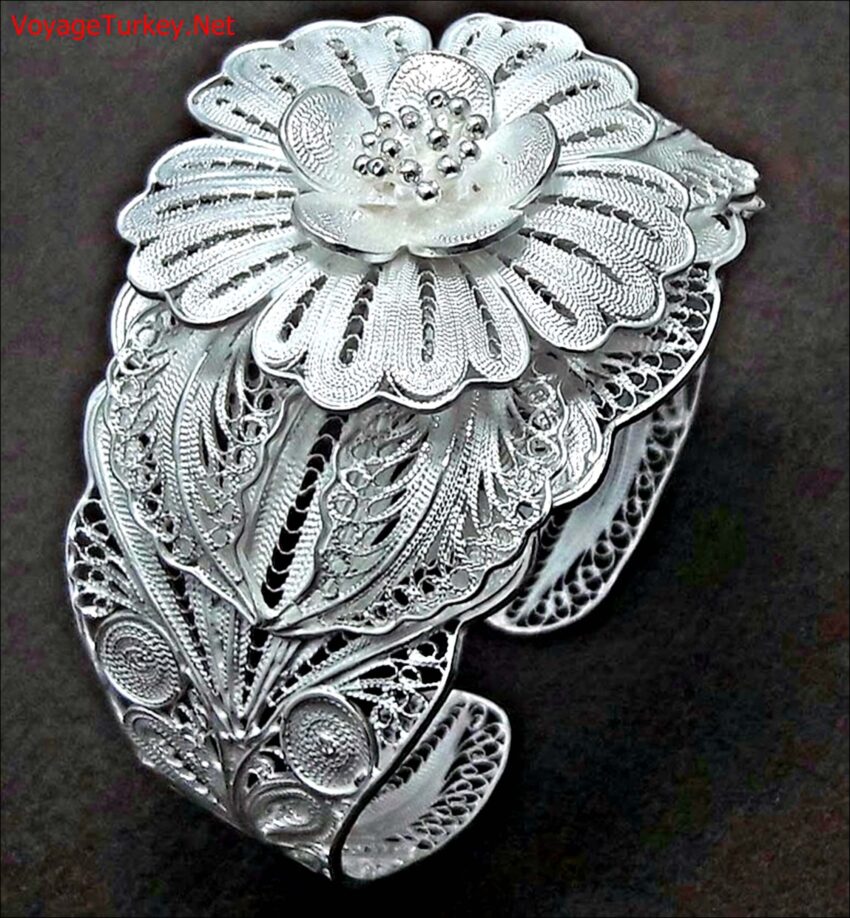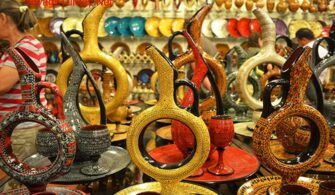Filigree is a handicraft made by combining small motifs created by bending silver in fine wire. Filigree is entirely based on hand work.
It’s traditional handcraft in Anatolia and Mesopotamia. Findings from archaeological excavations show that filigree technique has been used in Mesopotamia since 3000 BC and in Anatolia since 2500 BC.
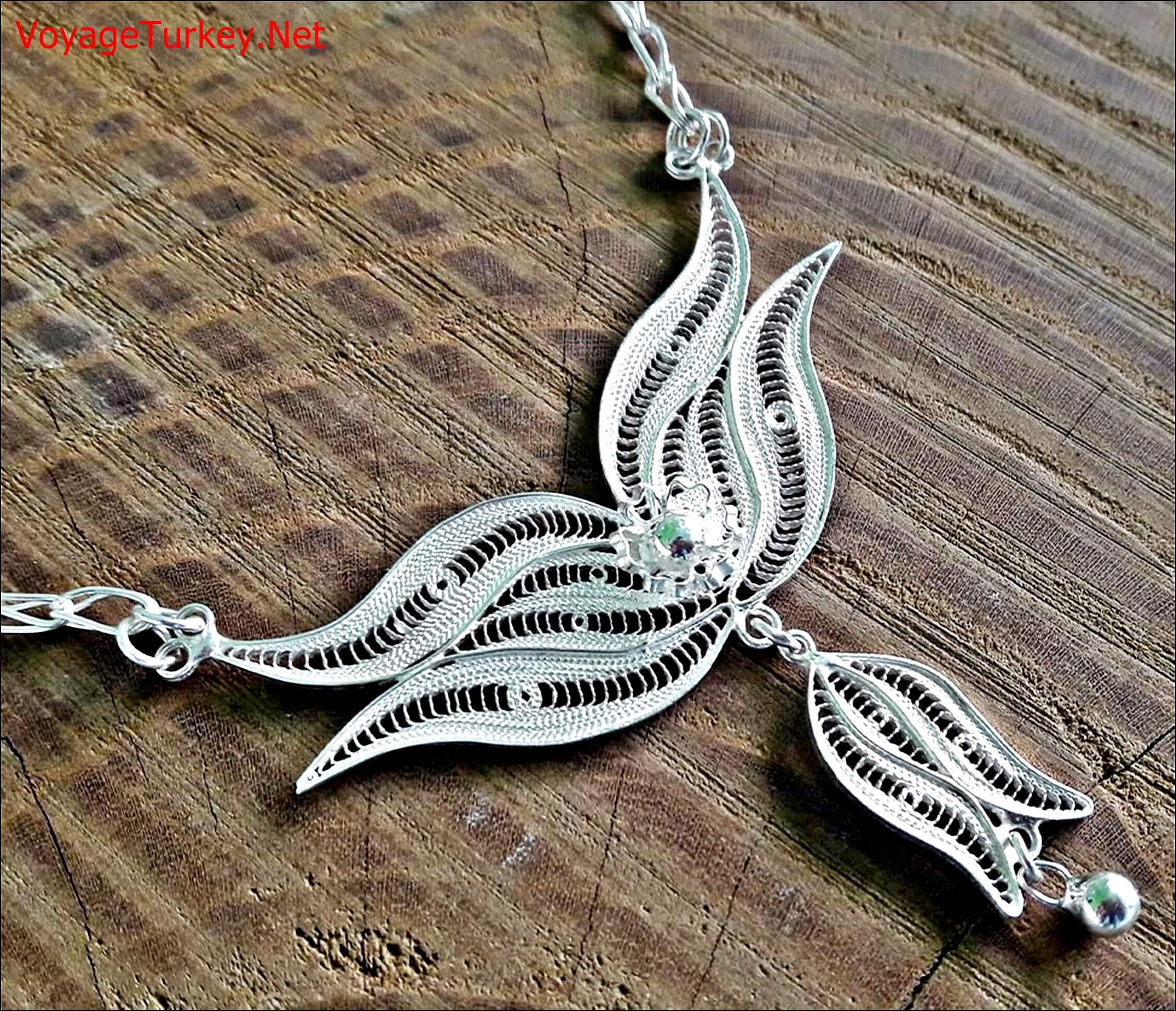
This handicraft is done in the provinces of Şanlıurfa, Trabzon, Mardin (especially Midyat District) and Ankara (Beypazarı District). Especially in Mardin and Midyat district of Mardin, the art of filigree is highly developed.
In the art of filigree, products such as necklace, choker, bracelet, belt, ring, earring, lapel pin, tobacco box, cigarette holder, mirror, tray, belt, earring, necklace, button and ring are made.
Although sometimes gold and other mines are used, silver is the most commonly used material in filigree.
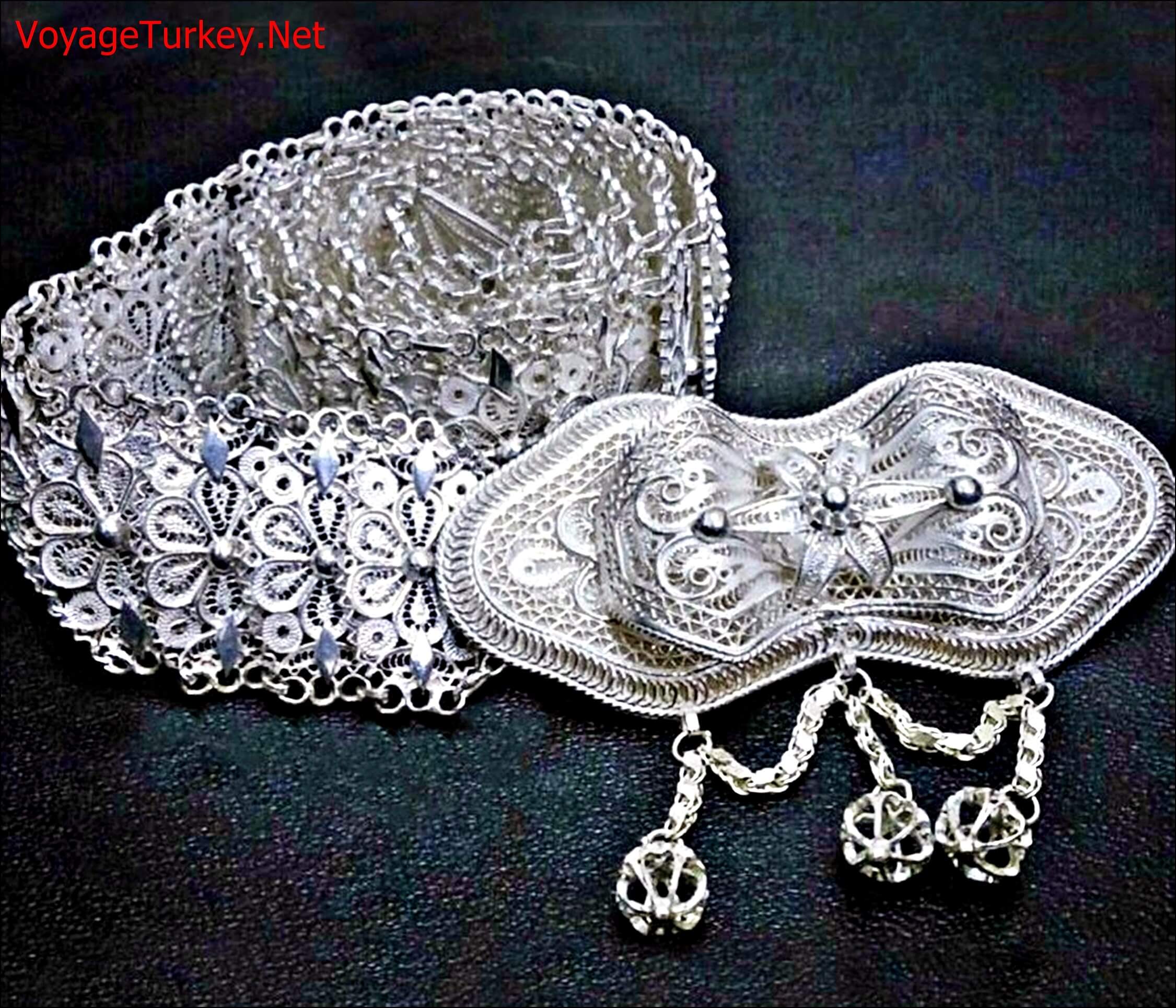
The first stage in filigree construction is the melting of the ingot silver. Then, the melted silver is thinned by passing through the tool called rolling mill. The silver, which hardens during the rolling process, is annealed to the heat until it becomes a glaze for softening. The re-softened silver is rolled and thinned.
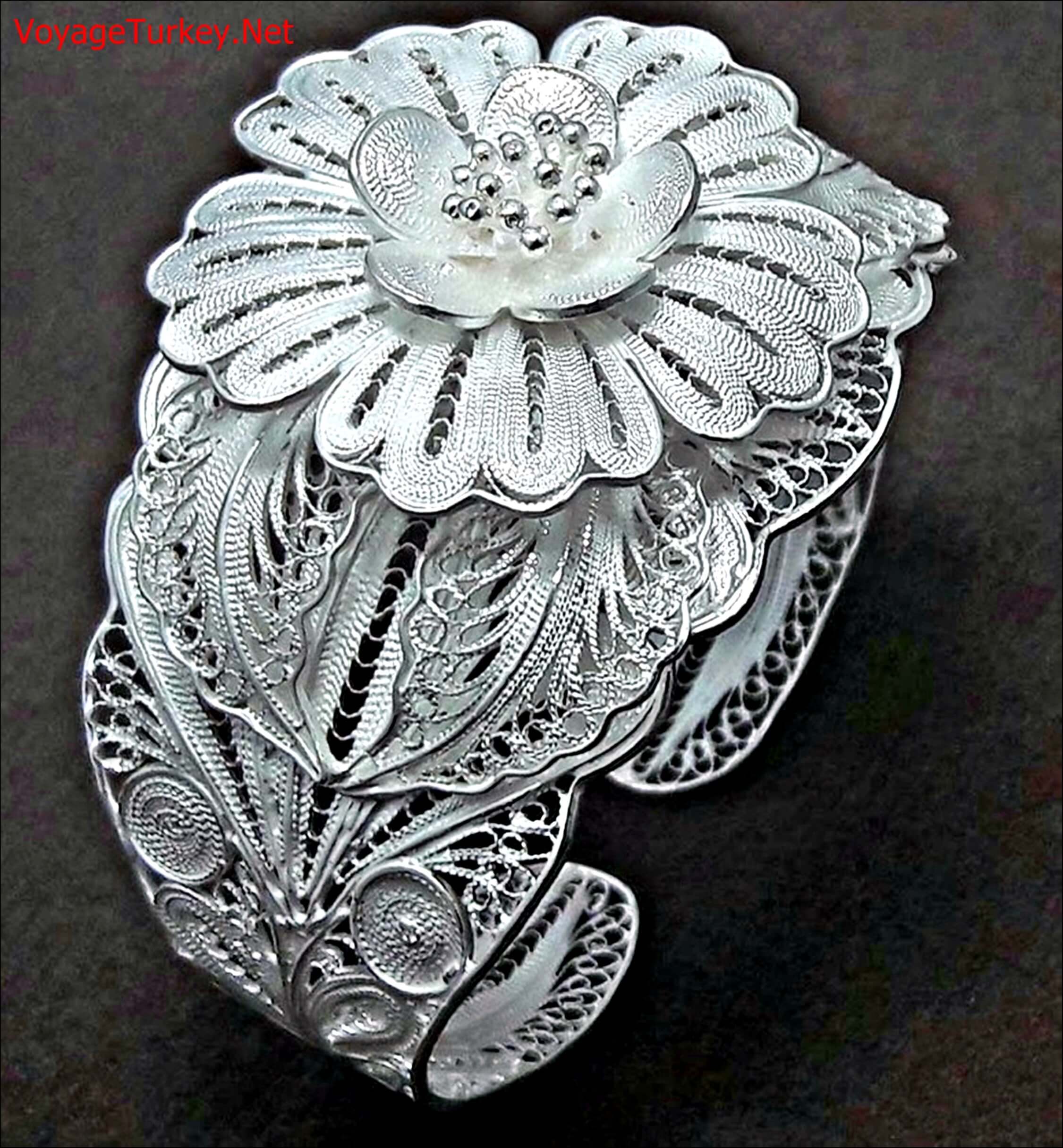
For thinning the wire must be pulled by the master. The stranded master wears a belt made of buffalo leather with metallic rings on his waist. When the power of the master is not enough, he passes the end of the wire to the rings on the skin and pulls it with his body.
As a result of the wire pulling process, the thinness of silver decreases to 1 millimeter. This thinness sometimes goes down to 40 microns.
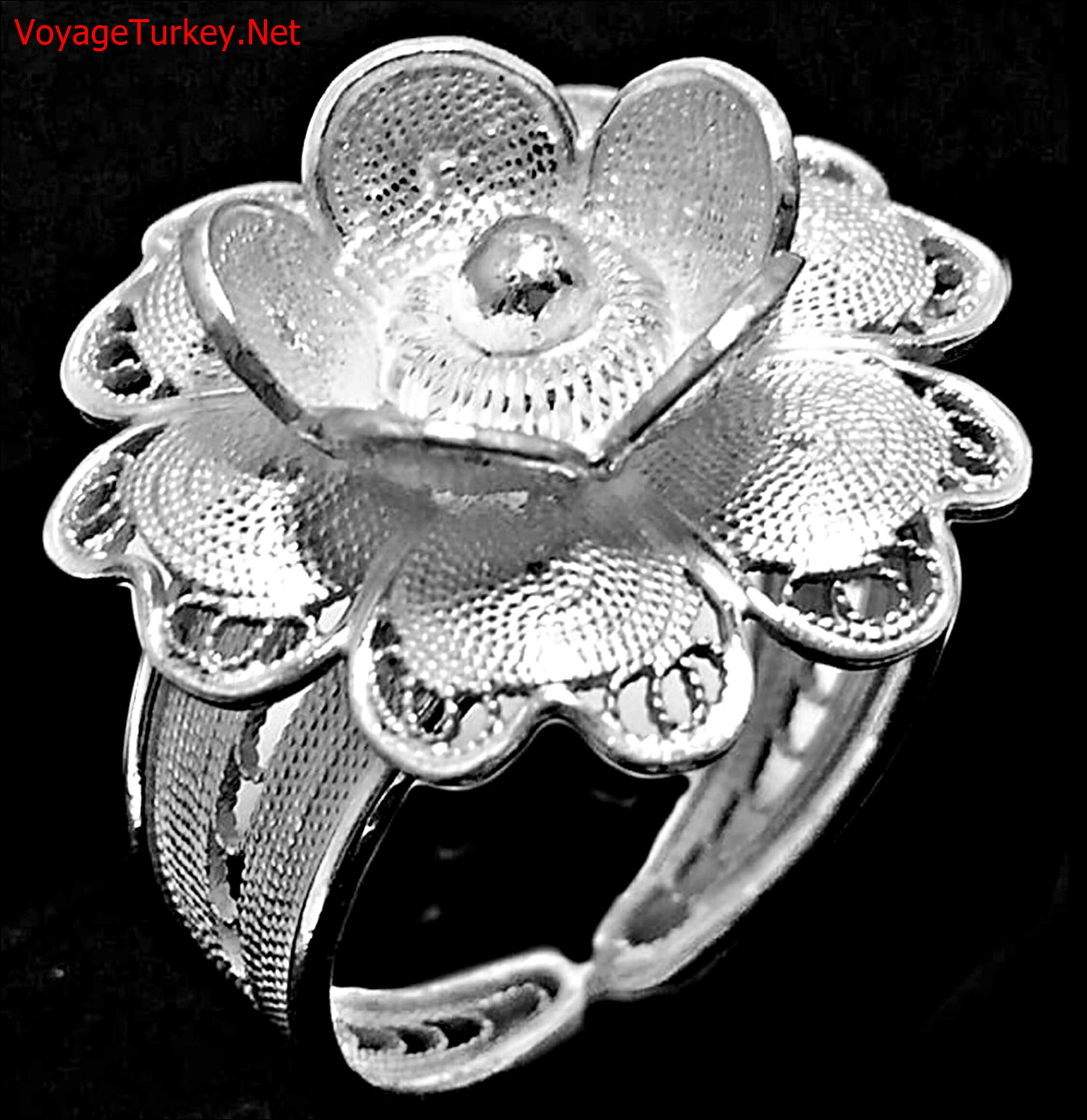
Then, the draft of the product is drawn on a paper in 1/1 scale. Based on the parts which will form the main skeleton of the product, it is determined how many microns thick wire will be used in which parts and the inner part will be filled with which patterns.
Then, wires are prepared by cutting according to the thickness and length determined on the draft.
The silver, which becomes a wire, is brought into the desired shape by the master with the help of small pincers.
In this way, the main skeleton (called ‘muntaç’ in Turkish) of the product is created. Each part of this frame is welded together by welding. At this stage, very small motifs are brought together by welding.
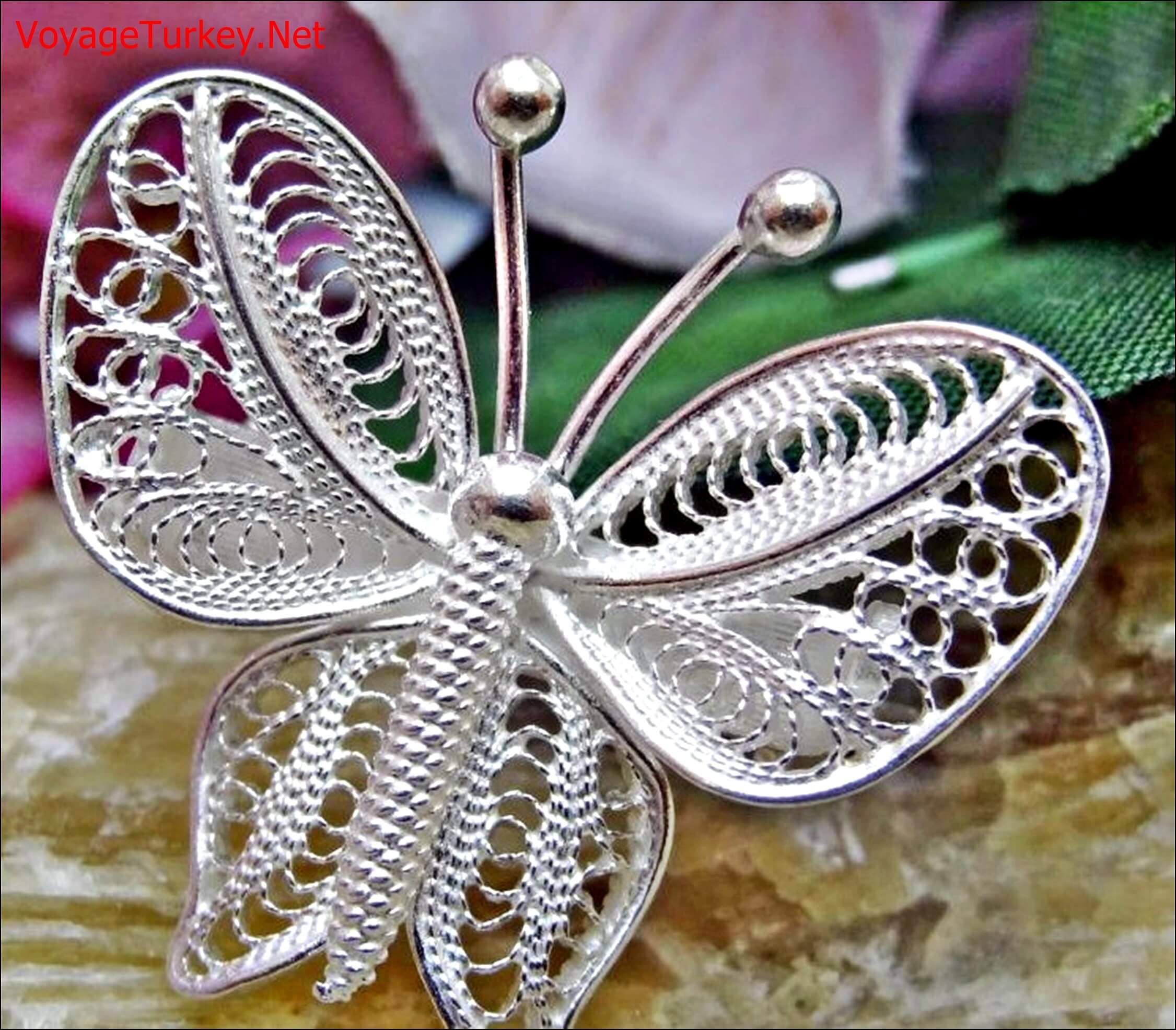
When a combined product is completed, all parts of product are contaminated, blackened and oxidized due to heating, welding and other processes. Therefore, bleaching process is applied so that the product can get its natural bright color. In the bleaching process, the products are boiled in nitric acidic water in a copper vessel for a few minutes. It is then rinsed with plenty of water and dried.
